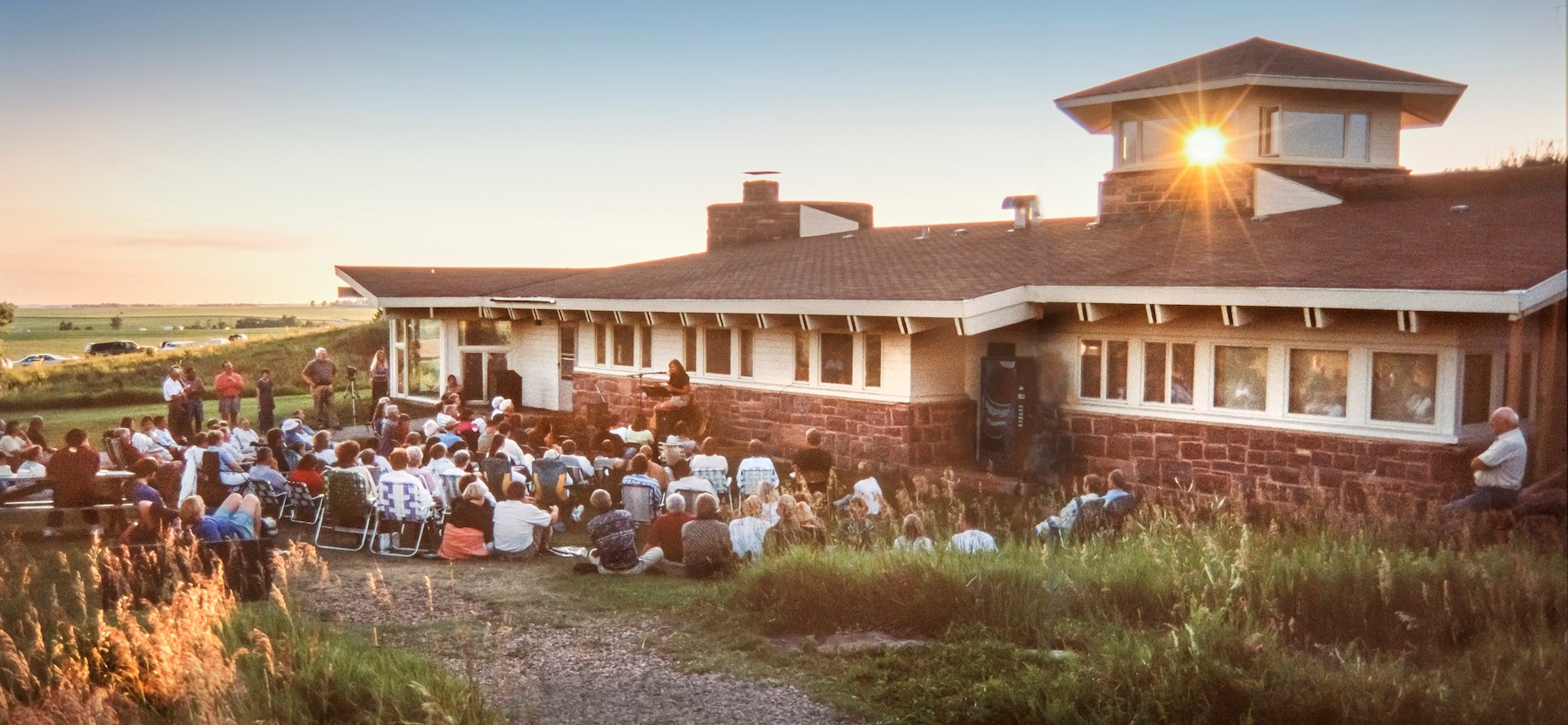
Photograph by Jim Brandenburg
It has long been my thought that a "place" finally selects the people who best reflect it, give it voice, and allow it to make a cultural contribution to the sum of all world culture under the sun.
Frederick Manfred
Save the Manfred House

The DNR’s Neglect of the Historic Manfred House
Save the Manfred House, Inc. has released a position paper, “The DNR’s Neglect of the Historic Manfred House,” that details the mismanagement of the property by the Minnesota Department of Natural Resources. It is available here.
The paper demonstrates that:
- The DNR has not lived up to its obligations to steward the Manfred House on behalf of the people of Minnesota.
- The DNR has not properly considered public opinion in formulating its plans to tear down the Manfred House, and has consistently misrepresented the extent of its public outreach.
- The DNR issued a Request for Proposal that was designed to result in the DNR’s desired outcome of the demolition of the Manfred House, rather than considering all reasonable options.
- The DNR has not engaged with the proper experts to consider the range of possible options for the Manfred House.
- The DNR did not support the listing of the Manfred House on the National Register of Historic Places, a designation the house received for its cultural significance and unique design.
- The DNR has not been responsive to requests from SMH for information that is in the public interest.
How You Can Help
- Make a tax-deductible donation.
- Join our mailing list.
- Like our Facebook page.
- Spread the word to others about our work.
- If you live in Minnesota, contact your legislators.
- If you'd like to help or want to learn more, contact us at info@savethemanfredhouse.org.
Background
In June 2022 the Manfred House was listed on the National Register of Historic Places due to its cultural significance as the home of Frederick Manfred and its unique organic architecture. However, the future of the house remains at risk; the DNR plans to tear it down.
After initial meetings with Save the Manfred House, Inc., the DNR has refused to engage with us since November 2021. The DNR has not agreed to a request for an inspection of the house by a qualified historical architect, and has not supplied important information about the terms and conditions of the original agreement to transfer the house to the DNR.
Please refer to the position paper for more detailed information, including information about the DNR survey and its plans for the site of the Manfred House.
DNR survey. The DNR conducted a survey in the spring of 2021, asking for input on three proposed designs to replace the Manfred House. Here is how 542 respondents answered the main question (the survey refers to the site of the Manfred House as "Eagle Rock Vista"):
In your view, which of these concepts represents the appropriate facilities for Eagle Rock Vista and the best value for the use of public dollars?
Concept #1: 4%
Concept #2: 3%
Concept #3: 11%
None of the above: 78%
Did not answer: 4%
There were a number of questions in the survey, and those completing it could offer written comments, which were overwhelmingly in opposition to the DNR’s plans. One survey question asked the 78% who voted “none of the above” on the design proposals to explain their reasons. Here are the responses.
The DNR design ideas can be found here. The results of the survey have not been published, but all of the data was provided to Save the Manfred House, Inc.
Resources
For more information about Frederick Manfred and the house, see the sections below and these additional resources:
The National Register of Historic Places nomination form (and accompanying photos).
Photos from the Frederick F. Manfred Papers at the University of Minnesota Libraries.
Videos about Manfred: “My Father by the Fire,” featuring a poem by Freya Manfred (film by Greg Winter) and “American Grizzly” (film by Mike Hazard and Jim Mulligan).
A brochure about Manfred that includes a list of his books.
The 2021 media release from Save the Manfred House, Inc. about the DNR’s plans to tear down the house.
Frederick Manfred
In many of his more than thirty books, Manfred captured the lives of the people who lived in the Upper Midlands area (parts of Minnesota, Iowa, South Dakota, and Nebraska) for which he suggested the name "Siouxland" in an effort to acknowledge the Native American people who lived there first.
His novels, poems, and essays explored the region across the span of two hundred years, chronicling the generations of Native Americans, farmers, and small-town folk that loved the land he meticulously described. One of his most famous books, Lord Grizzly, told the story of Hugh Glass. Always a thorough researcher, Manfred recreated some of the trapper's famous crawl across the South Dakota prairie.
A giant in stature, Manfred also had a profound impact on literature in the Upper Midwest, teaching writing for decades and maintaining friendships with leading writers, including Sinclair Lewis, Meridel Le Sueur, Robert Bly, and many others. Writers and students from around the region came to his house on the Blue Mounds during the time he lived there.
The Manfred House
Perched in his house near the top of the Blue Mounds, Manfred had a commanding view of Siouxland from which to write his tales of its people. The house was designed to blend into the landscape, and included an exposed wall of the beautiful Sioux quartzite rock that defines the surrounding area.
He wrote in a studio atop the house. You can see the sun shining through it in the photo by Jim Brandenburg, above.
In 1975, Manfred sold the house to the DNR, allowing it to become part of Blue Mounds State Park. His expectation, and that of all of us, was that it would be maintained for the future.